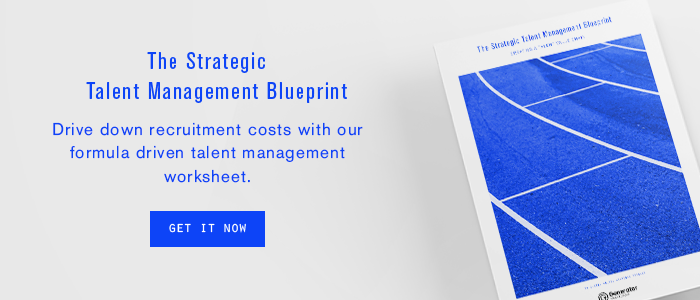24th November 2017
Get out your GPS! It’s market mapping time.
When you create a business strategy, the first step is to analyse the market context – and the same goes for recruitment. Attracting the best talent takes strategy and planning, so market mapping is an essential tool in any hiring manager’s arsenal.
Here’s how a market mapping process can make your recruitment more efficient, effective, and competitive in today’s landscape – so you can attract and retain the best talent out there.
What is market mapping?
Market mapping is a tool that helps your business understand the current market landscape, both in terms of talent and competition. A market map can be role-based, or a top-level market overview, and may include information on talent in other organisations and candidate supply and demand.
Market mapping can come in many forms – an Excel spreadsheet, a Powerpoint presentation, or a tailor-made chart for your business needs. But at its core, it’s about equipping your business with data-driven information to help plan your talent strategy, offset future talent risk, and understand the competitive landscape.
3 key advantages of market mapping
1. Anticipate hiring needs to recruit more efficiently.
Equipped with more data on the marketplace and any potential candidates, your company can be proactive and efficient in talent acquisition. Using a market mapping framework means you’re aware from the outset of any needs to expand your geographical search for a certain role, or look outside your industry for talent.
2. Develop market insights.
Once you understand more about particular roles in target sectors and companies, you can be better positioned to make the right decisions on talent acquisition, at the right times. For example, insights may cause you to start recruiting earlier than planned. They may also give you the confidence to move from mapping to contacting targeted candidates directly and developing a pool of ready-to-move talent.
3. Offset future risk.
Your business plan may include more roles requiring a data science background, but if the market demand for these niche roles is high and talent is scarce, do you have the resources to compete? You may need to invest in an ongoing mapping process to stay abreast of the best candidates in a tight market.
By mapping out the market, you can shape your talent acquisition strategy accordingly, and offset the risk of not being competitive enough to find the right talent – whilst retaining internal talent.
The 4 step market mapping process
Market maps can be as simple or as complex as your business needs, and there are plenty of tools out there to help you along the way.
1. Outline your business needs.
Work with your HR teams on a talent pipeline strategy in line with your company’s strategic direction. From there you’ll be able to identify exactly which roles your business needs to recruit next – and this can form the focus of your market mapping efforts.
Don’t try to look for everything at once. Focus your map on new roles your business needs, or key roles that require succession planning, and work backwards from there.
2. Leverage existing data across recruitment platforms.
LinkedIn, Indeed and Seek are great places for your teams to start collecting data on the roles are currently out there, the packages that are offered by competitors, and the size of the candidate pool.
Keep an eye on information such as average salaries, the duration a job postings remains in-market how many candidates have applied already. With this information your hiring managers can start to map the marketplace in a spreadsheet, Powerpoint presentation with charts, or using a market mapping template.
3. Identify key competitors and understand their strategy.
Identify key competitors and understand their strategy. One of the most important parts of market mapping is understanding your competition, their company hierarchy and future growth plans. LinkedIn, company websites, press releases, Google alerts, and end of year reports can all provide valuable insights into a company’s hiring strategy and the type of talent they attract.
Online review platforms, such as Glassdoor’s employer reviews, can also help you understand why candidates choose to stay with a company – and why they leave.
4. Consider potential candidates to add to your talent pool.
Market mapping isn’t just about understanding the roles and the competition. It’s also about finding potential candidates to add to your talent pool, and adapting your acquisition strategy to make sure your company is attractive. Use your research as an opportunity to highlight any passive talent for future roles in your business, and note which competitors they are currently with.
Networking events, such as professional meetups, industry catch-ups or conferences, are also great opportunities to speak to potential talent to see what they’re looking for in their next career move.
Over to you
Not only is recruiting great talent challenging, it’s also the single biggest, non-salary, HR-related expense. Developing a comprehensive talent management strategy that all HR managers are aligned with is the best way to ensure organisation-wide recruitment costs are reduced.
Smart talent acquisition requires smart planning. We’ve developed a Strategic Talent Management Blueprint that sets the right framework in place for HR managers to map out organisation-wide talent needs – recruitment and beyond. Get your copy by clicking on the image below.
Categories: Acquiring Talent




